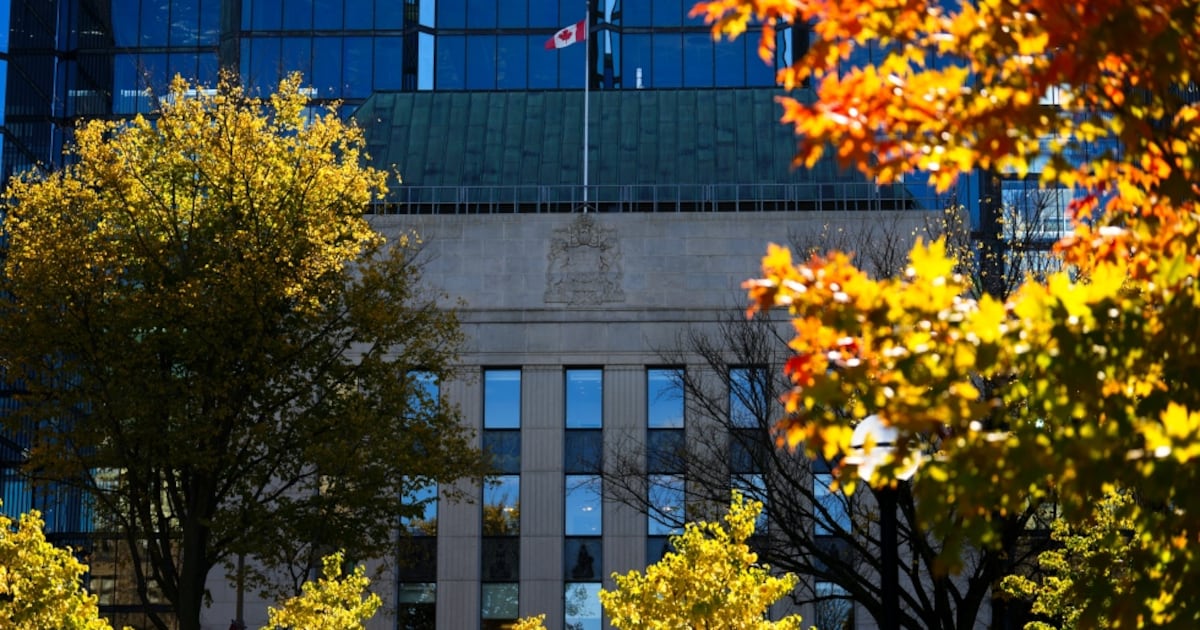BENGALURU — The Bank of Canada will reduce its overnight interest rate by 25 basis points on Oct. 29 for a second consecutive time to support a weak economy under threat from U.S. tariffs, according to a majority of economists polled by Reuters.
Tariffs imposed by the U.S. on steel, aluminum and automobiles have hurt Canada’s exports, leading to a 1.6 per cent economic contraction in the second quarter. The economy has been partly shielded by the U.S.-Mexico-Canada Agreement (USMCA) which is up for review next year.
U.S. President Donald Trump on Thursday suddenly terminated all trade talks with Canada. Unemployment was already at a record high and firms are pessimistic about investments and hiring.
BoC Governor Tiff Macklem recently said the central bank would place more emphasis on potential risks in its upcoming decision.
The BoC will cut its key rate by a quarter percentage point to 2.25 per cent next week for a second time in a row, according to around 70 per cent of economists – 23 of 34 – surveyed in the Oct. 21 to 24 Reuters poll. That forecast comes despite a recent surge in inflation.
Eleven expected the central bank to hold, with only BMO among the big five Canadian banks in that group. That included six who expected the next cut to come in December.
The central bank has already delivered 250 basis points of rate cuts, one of the most aggressive in the G10 group of countries.
“The priority at this point is still to provide some economic momentum to help close the slack and bring the unemployment rate down again,” said Avery Shenfeld, chief economist at CIBC Capital Markets.
“For now, our forecast is this is the last rate reduction, but the BoC would likely return with rate cuts in 2026 if trade negotiations are unable to extend the USMCA deal…the biggest risk is we lose the exemption from tariffs we now have under the agreement.”
A more than 60 per cent majority – 21 of 34 – predicted the rate to be 2.25 per cent at the end of next year. That matches the bottom of the central bank’s 2.25 per cent to 3.25 per cent estimated neutral rate range, which neither stimulates nor restricts economic activity.
Only eight economists saw the rate at 2.00 per cent or lower by end-2026.
“We expect cutting beyond that (2.25 per cent), into outright stimulative levels of interest rates, will be more difficult with inflation still sticky at an above-target rate and fiscal policy potentially ramping up as a support after the federal budget in early November,” said Abbey Xu, economist at RBC.
The Canadian economy likely rebounded last quarter, growing at an annualized 0.5 per cent, poll medians showed.
It is forecast to expand 0.9 per cent this quarter and average 1.2 per cent growth this year and next, the lowest since the pandemic.
The unemployment rate is expected to remain near the current 7.1 per cent until at least the second half of next year.
Inflation, which rose to 2.4 per cent last month from 1.9 per cent in August, will remain largely contained around the middle of the BoC’s one to three per cent target range over the coming years, the poll showed.
(Reporting by Indradip Ghosh; Polling by Reshma Ann Samuel; Editing by Ross Finley, William Maclean)

